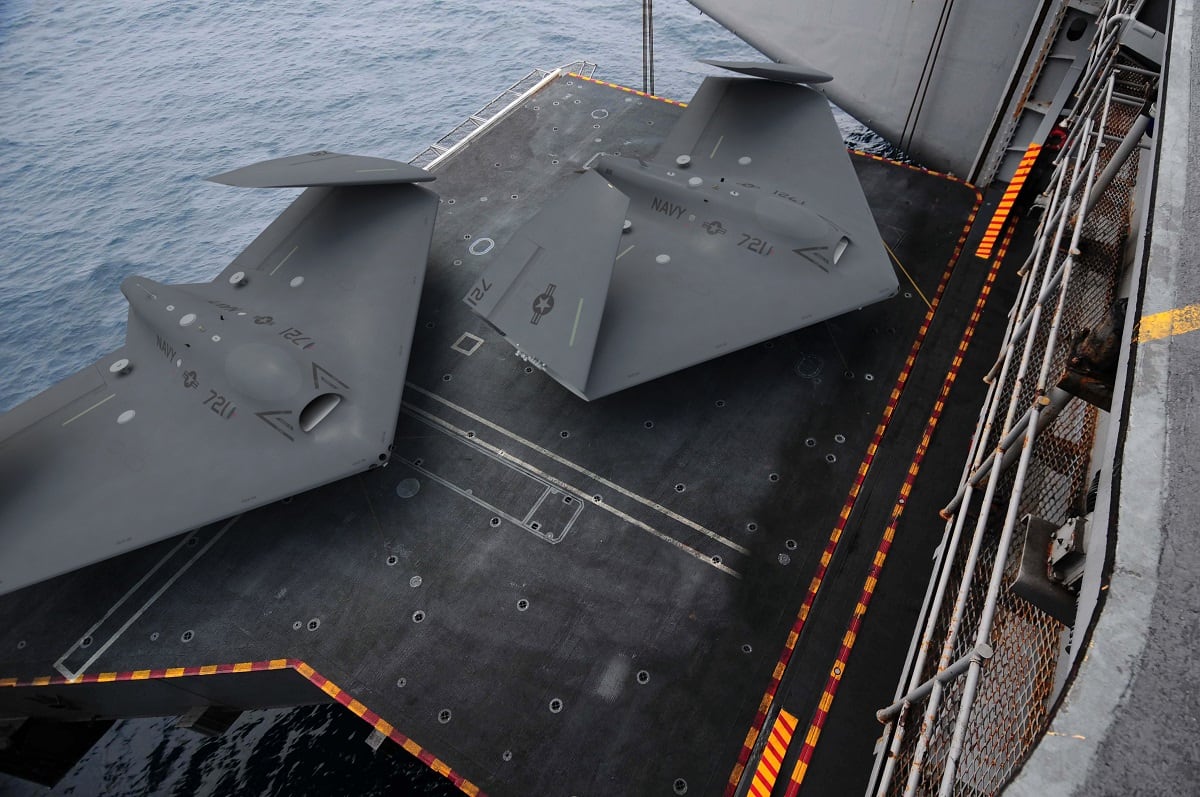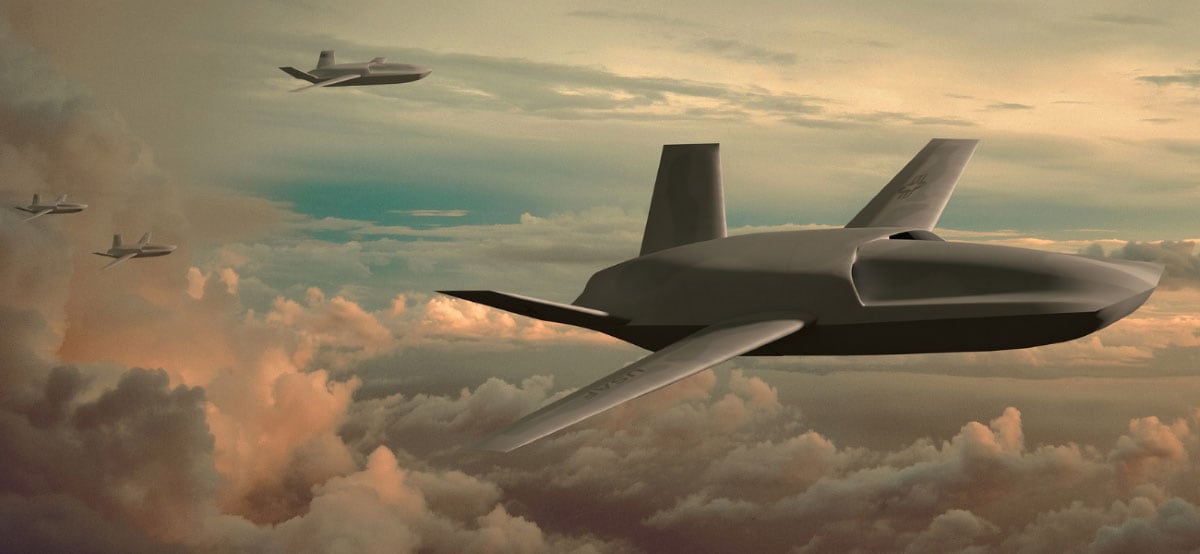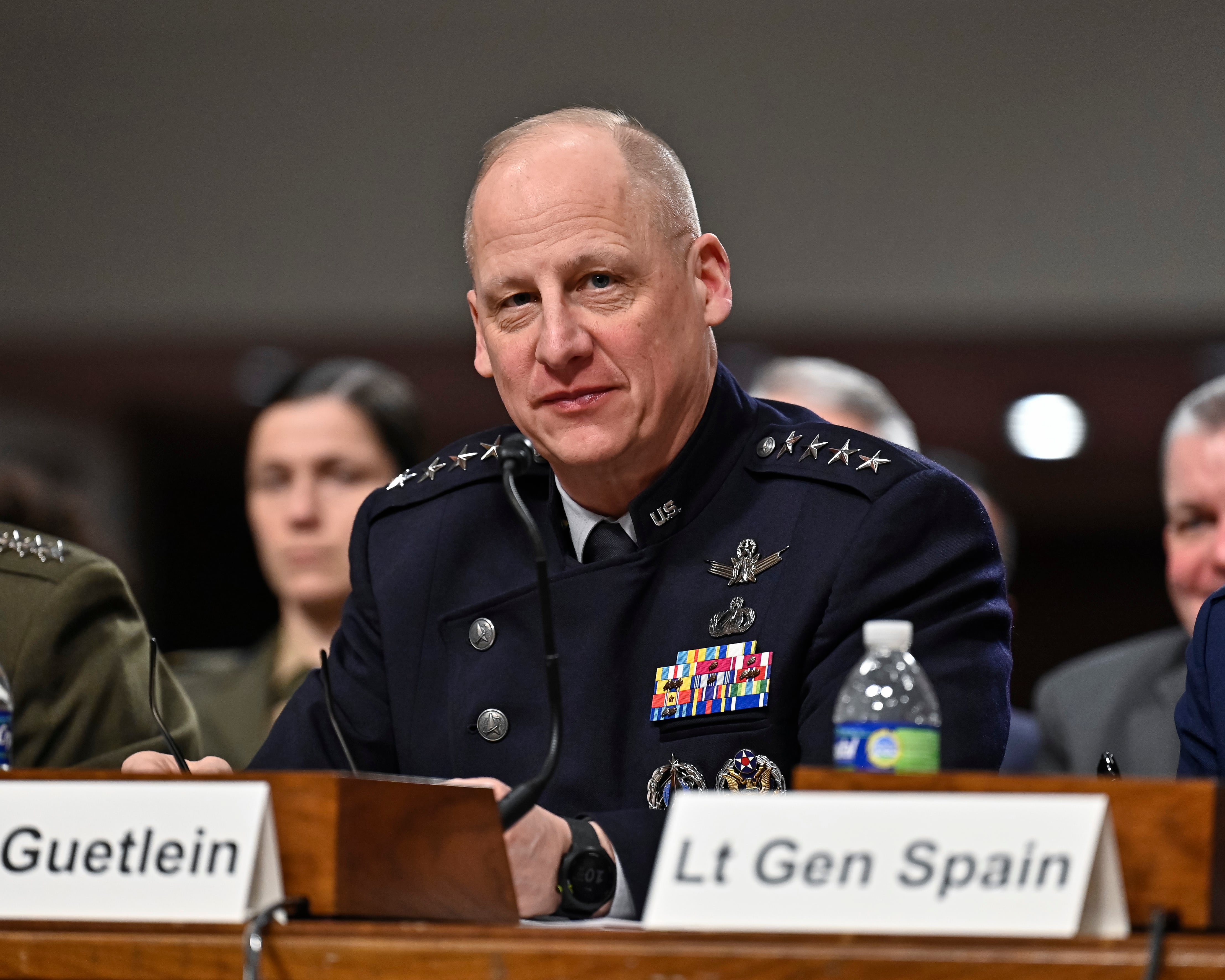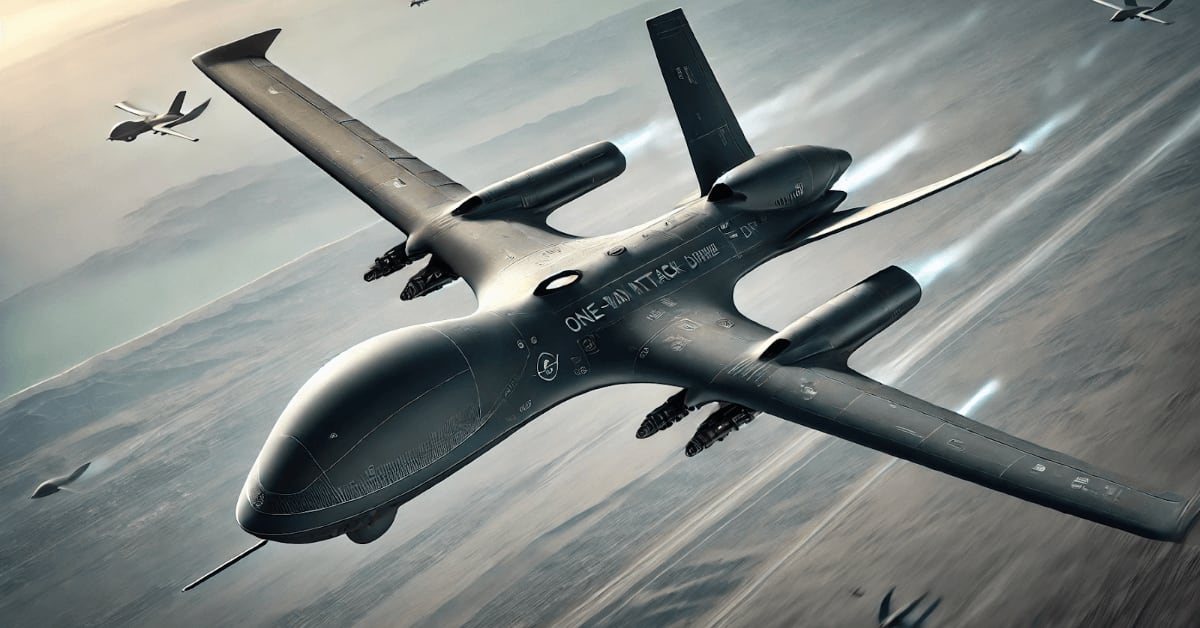NATIONAL HARBOR, Md. — Lockheed Martin’s unmanned MQ-25 tanker drone proposal for the Navy will incorporate some familiar equipment, including the General Electric F404 turbofan engine that powers the Super Hornet and the F-35C landing gear made by United Technologies Corp., company executives announced Monday.
Triumph Aerostructures, which will manufacture the internal structure of the drone, rounds out the list of suppliers disclosed by Rob Weiss, outgoing head of Lockheed Martin Skunk Works, and Jeff Babione, who will take over Skunk Works this summer.
“We’ve done a great job of pulling together a real proven set of aerospace technology providers,” Babione told reporters during a briefing at the Navy League’s Sea Air Space conference.
Triumph has manufactured structures for a wide range of aircraft including Northrop Grumman’s E-2D Hawkeye, the Bell-Boeing V-22 Osprey and Lockheed’s F-35 joint strike fighter, he said. Meanwhile UTC’s landing gear has proven its utility in a “difficult use environment,” and the F404 has clocked more than 13 million flight hours.
“That engine is already on the carrier and they would have everything they would need to support the MQ-25, no innovation required — extremely important in reducing the risk and overall cost,” Babione said.
Although Lockheed’s MQ-25 offering is re-using equipment from legacy airframes, Skunk Works is arguably taken the most risk in its design, putting out a tanker drone concept that doesn’t look much like its competitors.
For one, the company ditched its previous design after the Navy ended its program for an surveillance and strike drone and began an effort to develop an unmanned aerial refueling asset, whereas competitors General Atomics and Boeing heavily reused their MQ-25 designs.
But perhaps even more noticeably, Lockheed is the only competitor offering a flying wing aircraft after Northrop Grumman dropped out of the competition last year. Both General Atomics and Boeing have notably put forward wing-body-tail aircraft.
“We did a number of trade studies,” but found its previous design “was a compromise, as frankly most derivatives end up being,” explained Weiss. The company viewed wing-body-tail configurations as “big, heavy, expensive” and “not as high performing an airplane as we would like,” and returned to a flying wing configuration.

Lockheed liked the higher range and low fuel consumption of a flying wing design, Weiss said. Another Lockheed official on the program added that most tankers store fuel in its wings, “but all we are is a wing,” potentially allowing it to carry more fuel.
Another big departure from its competitors is Lockheed’s sales approach, which has showcased the aircraft’s room to grow into other applications, including a penetrating strike mission.
A video revealed during the briefing Monday showed Lockheed’s MQ-25 launching two AGM-154 Joint Standoff Weapons from the hard points that would usually carry its drop tank and refueling pod.
Meanwhile, while the MQ-25 is not a stealth aircraft, it’s a “a plane form that would lend itself to a low observable design,” Weiss said, and could be modified to be LO in the future if the Navy wishes.
The Navy plans to pick an MQ-25 vendor this summer, and will award a contract for the four engineering and manufacturing development aircraft, with an option for three more test assets.
Unlike Boeing, Skunk Works has not unveiled a prototype yet, but Weiss said he didn’t believe there was a benefit to creating a flyable prototype before a contract award.
“We are prepared to move into an accelerated program for the development phase,” he said.
A Navy-required deck handling demo is coming up “in the very near future,” Weiss said, but he would not disclose whether Lockheed would use a surrogate aircraft during the tests except to note that the company will not use its X-44 flying wing demonstrator during tests.
Valerie Insinna is Defense News' air warfare reporter. She previously worked the Navy/congressional beats for Defense Daily, which followed almost three years as a staff writer for National Defense Magazine. Prior to that, she worked as an editorial assistant for the Tokyo Shimbun’s Washington bureau.







